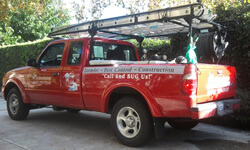Ants

Less common, but of great importance, is the red imported fire ant which has recently gained a foothold in southern California. In some areas, the spread of the fire ant has been slowed by competition from the Argentine ant.
Carpenter ants also invade buildings in California. Although they do not eat wood as termites do, they hollow it out to nest and may cause considerable damage.
Identification
| Argentine Ant | Carpenter Ant | Odorous House Ant | Pavement Ant |
|---|---|---|---|
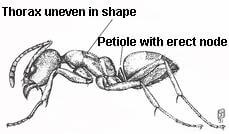 | 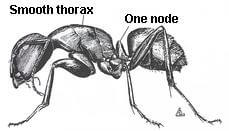 | 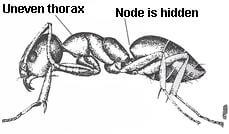 | 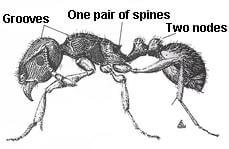 |
|
|
|
|
| Pharoah Ant | Red Imported Fire Ant | Southern Fire Ant | Thief Ant |
|---|---|---|---|
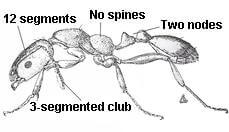 |  | 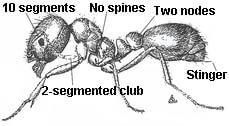 | 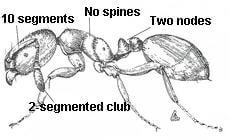 |
|
|
|
|
Carpenter Ants
While the control of other household ant colonies requires similar exclusion and sanitation tactics, the control of carpenter ants seems to be as much of an art as it is a science.
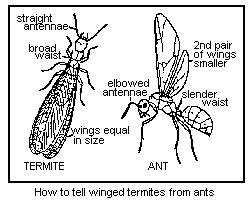
What they do is bore into wood so they can nest inside. As this habit can cause serious damage to structures, it is extremely important to begin removing carpenter ants as soon as they are identified. Carpenter ants prefer moist and humid environments, and forage mostly late in the day or at night.
There are several species of carpenter ants that may be found infesting homes and other buildings. Normally workers are black, or red and black, in color and range in size from 3/8 to 1/2 inch. Winged queen ants may be as large as one inch. However, size is not a reliable characteristic to identify carpenter ants. The best method to separate carpenter ants from other ants is by the following characteristics: (1) a waist with one node (petiole) and (2) a thorax with an evenly rounded upper surface.
Nests
- Main colony often outside on tree stumps, dead tree, firewood pile, or fence post
- Consist of extensive networks of galleries usually begun in areas of wood, soft from decay
- May contain several thousand individuals; indoor nests may be satellite colonies of a larger nest outdoors
- Up to 20 satellite colonies can be associated with main colony that contains the queen(s)
- Indoor colonies always associated with moisture and may occur in hollow doors, window or door frames, or the subfloor
For more information about eradicating ants, see our page on Ant Control in Orange County and Los Angeles County.
Fat Cat Exterminators is ready to provide a comprehensive Carpenter Ant control program specialized to fit your needs. Please contact us today to schedule an appointment.
Thank you for considering Fat Cat Exterminators as you search for a pest control partner.
